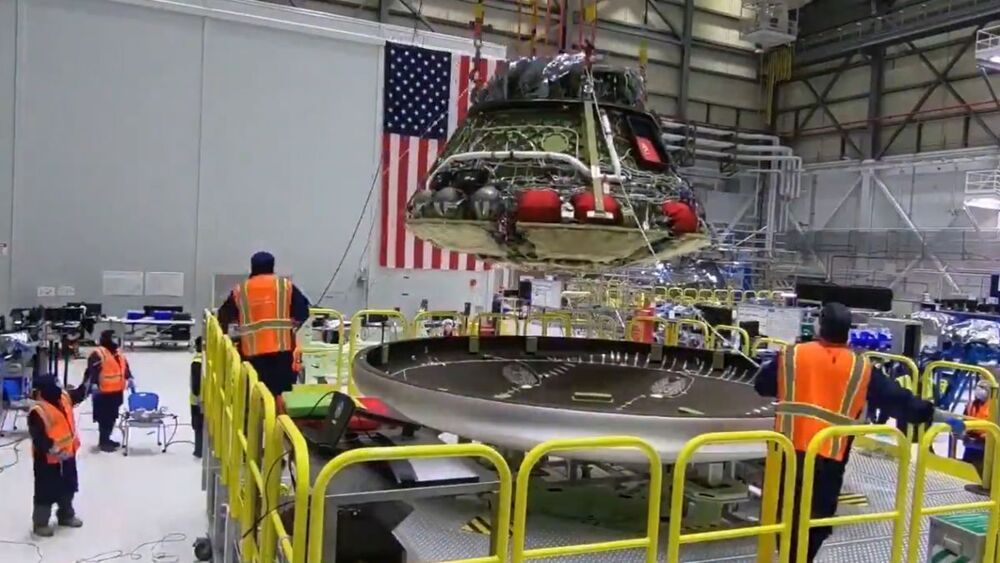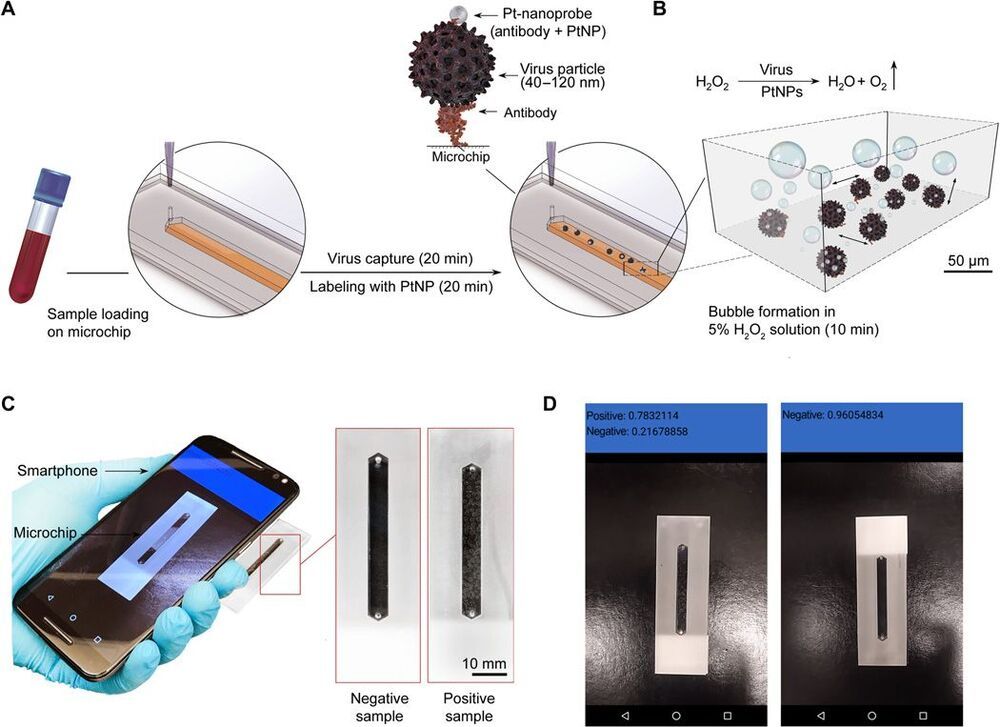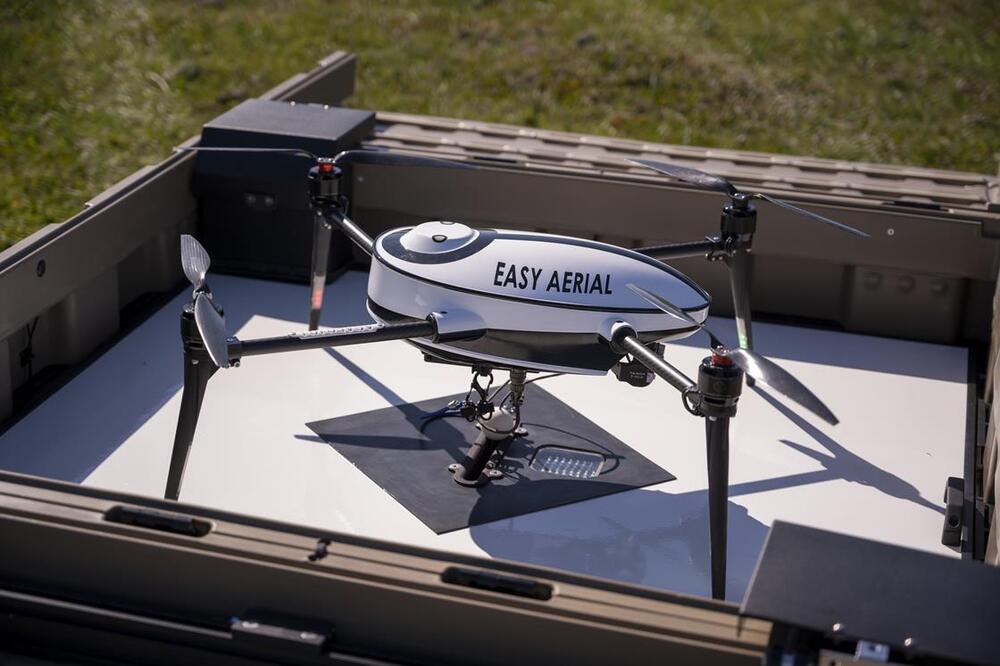Boeing’s next Starliner test flight for NASA won’t launch until early 2021 due to software checks, a NASA official said Tuesday (Nov. 10).




Emerging and reemerging infections present an ever-increasing challenge to global health. Here, we report a nanoparticle-enabled smartphone (NES) system for rapid and sensitive virus detection. The virus is captured on a microchip and labeled with specifically designed platinum nanoprobes to induce gas bubble formation in the presence of hydrogen peroxide. The formed bubbles are controlled to make distinct visual patterns, allowing simple and sensitive virus detection using a convolutional neural network (CNN)-enabled smartphone system and without using any optical hardware smartphone attachment. We evaluated the developed CNN-NES for testing viruses such as hepatitis B virus (HBV), HCV, and Zika virus (ZIKV). The CNN-NES was tested with 134 ZIKV-and HBV-spiked and ZIKV-and HCV-infected patient plasma/serum samples. The sensitivity of the system in qualitatively detecting viral-infected samples with a clinically relevant virus concentration threshold of 250 copies/ml was 98.97% with a confidence interval of 94.39 to 99.97%.
See allHide authors and affiliations.
Smartphone systems can also benefit from the recent unprecedented advancements in nanotechnology to develop diagnostic approaches. Catalysis can be considered as one of the popular applications of nanoparticles because of their large surface-to-volume ratio and high surface energy (11–16). So far, numerous diagnostic platforms for cancer and infectious diseases have been developed by substituting enzymes, such as catalase, oxidase, and peroxidase with nanoparticle structures (17–20). Here, we adopted the intrinsic catalytic properties of platinum nanoparticles (PtNPs) for gas bubble formation to detect viruses on-chip using a convolutional neural network (CNN)–enabled smartphone system.


This is the car that is set to make the Koenigsegg One:1 seem slow and the Bugatti Chiron positively leisurely. The production Hennessey Venom F5 is a U.S. hypercar that—if it delivers on its maker’s bold claims—will be the fastest production car in the world.
Hennessey has long been known as a tuner—one with a reputation for extravagant claims in the past—but the Venom F5 marks its effective debut as a manufacturer in its own right. (The ultra-limited Venom GT that preceded it used a Lotus tub.) It’s named after the highest rating on the Fujita scale of tornado strength, and just 24 cars will be built, each priced at $2.1 million.




On today’s episode we are going to continue our virtual global road trip over to the country of South Africa, to the Soweto township of the city of Johannesburg, and meet up with Ms. Sibongile Mongadi, Founder of Uku’hamba Pty Ltd, a start-up company that focuses on biotechnology and healthcare manufacturing with a goal of improving lives of amputees across Africa.
Uku’hamba is a 100% black youth women owned company and Uku’hamba means “To Walk” in Zulu.
Utilizing 3D printer and 3D scanning technologies, she has dedicated her career to developing prosthetic limbs that can be widely and cheaply manufactured. Her mission is to ensure prostheses are made available to anyone in need, greatly increasing the independence of amputees who may not currently be able to afford them.
Ms. Mongadi has been designated as one of the top emerging innovators across Africa in 2018, named in the Inspiring Fifty’s class of 50 South African Women of 2019, and as a Top 100 South Africa Shining Stars for Science & Technology in 2019.
When the Covid-19 pandemic struck South Africa, she redirected her company’s efforts to manufacturing safety equipment for front line workers. She has also worked with 3 other young innovators to build a contact-less thermometer sensor and hands-free, hand sanitizer system used in schools and corporate locations in the fight against COVID-19.
Ms. Mongadi is also the founder of the Soweto Young Women Empowerment initiative that seeks to shape young women to be leaders in different spheres of society.